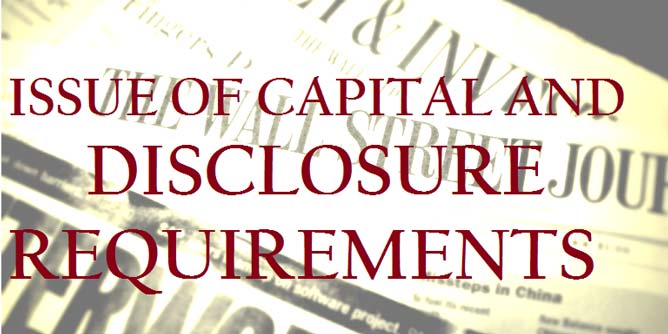As more and more promoters look to raise money by divesting equity in their business, the disclosure standards and regulations for listing on the stock exchanges are becoming increasingly stringent. The Securities and Exchange Board of India (“SEBI”) formulated the Issue of Capital and Disclosure Requirements, Regulations, 2009 (“ICDR Regulations”), to promote the development of a healthy capital market and to protect the interests of investors in securities. SEBI carefully monitors the dealings and actions of companies planning to raise money on the stock exchanges and is particularly sensitive about attempts that are aimed at creating a demand or frenzy for an upcoming issue in the market. Conditioning the market for an upcoming issue could be done in many ways such as, by writing interesting stories or articles about the Issuer or about the market space in which the Issuer operates, by broadcasting engaging commercials about the Issuer in mass media, or by doing any such thing that would create investor interest in the upcoming issue. Just before a public issue or before any other money raising exercise, you will find companies flooding the advertising channels with a lot of marketing gimmicks meant to get investors interested.
ICDR Regulations
Regulation 60 of the ICDR Regulations which deals with the subject of public communications, publicity materials, advertisements and research reports lists out what an Issuer of securities can and what it cannot advertise about. Regulation 60 also details the manner in which publicity should be regulated and provides for standard legends to be inserted on all public communications and publicity materials that are released after the Issuer has filed its offer document (2nd part of this article) for approval with SEBI.
In essence, Regulations 60 requires that no publicity material or advertisement should contain anything that is ‘extraneous to the contents of the offer document’. Regulation 60, clause (1) reads as below;
60. (1)
Any public communication including advertisement and publicity material issued by the issuer or research report made by the issuer or any intermediary concerned with the issue or their associates shall contain only factual information and shall not contain projections, estimates, conjectures, etc. or any matter extraneous to the contents of the offer document.
At first, it is not clear what ‘extraneous to the offer document’ could mean? Does it refer to information that is not contained in the offer document? Or is it any information that is inconsistent with the offer document?
It may be safe to assume that the intention here was to deal with any material that is ‘unrelated’ to the offer document or any material that is ‘irrelevant’ or ‘of the point’ to what is disclosed in the offer document. For sure the intention could not be that the Issuer should not state anything (in the form of an advertisement) that is not already contained in the offer document. That kind of strict interpretation would restrict the Issuer from releasing information that is publicly and widely available just because the same information does not form part of the Issuer’s offer document. A statement like ‘New Delhi is the capital of India’ for instance.
Things however get murkier after reading sub regulation 5 of the same Regulation 60, which reads as below;
60. (5)
The issuer shall not, directly or indirectly, release, during any conference or at any other time, any material or information which is not contained in the offer document.
The words ‘during any conference’ ensure that selective disclosure of information to a section of people (for instance selective disclosure to analysts) is avoided.
However, the words that follow, i.e. ‘at any other time’, oppose this interpretation. How would things be different if the regulation was worded as “…..release, at any time, any material….”
In any event the subject of selective disclosures is captured fairly clearly in sub regulation 13 of Regulation 60 which states as below;
60. (13)
No selective or additional information or information which is extraneous to the information disclosed to the public through the offer document or otherwise, shall be given by the issuer or any member of the issue management team or syndicate to any particular section of the investors or to any research analyst in any manner whatsoever, including at road shows, presentations, in research or sales reports or at bidding centers.
Consequently, transactional lawyers must ensure that all advertisement and publicity material released by an Issuer after filing the offer document is based purely on what is already included in the offer document. It also leaves little room for exercising the virtues of practical or logical thinking on the part of lawyers who regularly deal with this issue.
In my next post I will try to explain this aspect of marketing with a very real situation, one which arises frequently, and how the ICDR Regulations deal with the subject. I will also talk about the role of corporate governance with respect to publicity and marketing of issues.


